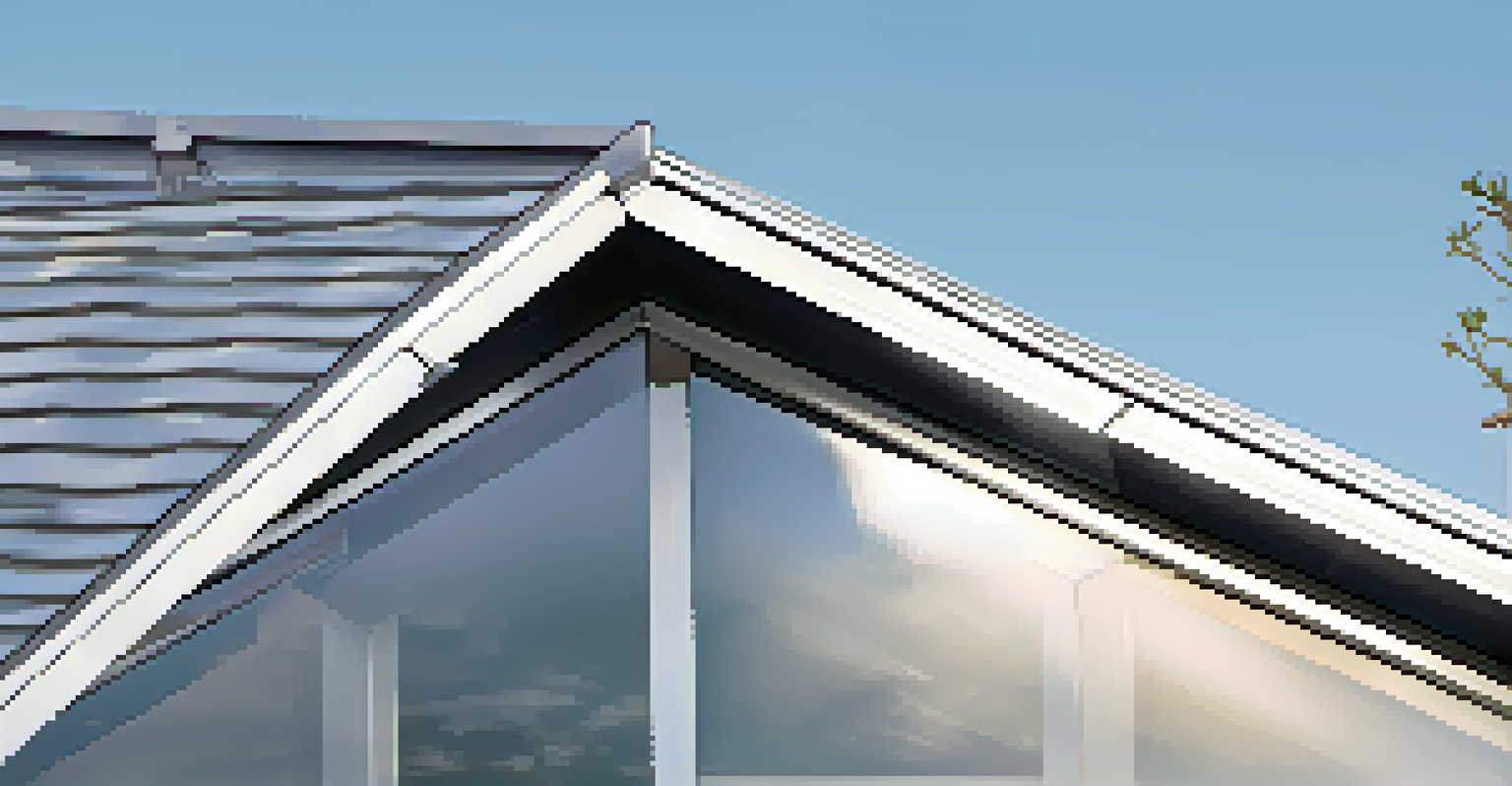How to Choose the Right Roofing for Your Renovation Needs

Understanding Your Roofing Options for Renovation
When it comes to roofing materials, you have a variety of options to consider. From asphalt shingles to metal roofing and tiles, each material comes with its own set of benefits and drawbacks. Understanding these options will help you make an informed decision that suits your renovation needs and aesthetic preferences.
A roof is more than just a covering; it's a shield that protects your home and enhances its beauty.
For instance, asphalt shingles are popular for their affordability and ease of installation, making them a common choice for many homeowners. On the other hand, metal roofing is celebrated for its durability and energy efficiency, which can provide long-term savings. It's essential to weigh these factors against your budget and the specific demands of your renovation project.
Additionally, consider the climate in your area when choosing roofing materials. Some materials perform better in certain weather conditions than others. For example, clay tiles are excellent in hot climates, while metal roofs can withstand heavy snow loads. Always aim for a roofing material that complements both your home and your environment.
Assessing Your Budget for Roofing Choices
Budgeting for a new roof can feel daunting, but it's a crucial step in your renovation process. Start by determining how much you're willing to spend on roofing materials and installation. Remember, while it might be tempting to choose the cheapest option, investing a bit more can save you money in the long run through durability and lower maintenance costs.

Consider not just the initial cost of the roofing materials, but also the long-term expenses associated with them. For instance, while wood shakes may have a lower upfront cost, their maintenance and shorter lifespan could lead to higher overall expenses. It's wise to look at the total cost of ownership rather than just the purchase price.
Choose the Right Roofing Material
Different roofing materials offer unique benefits and drawbacks, so understanding your options is crucial for your renovation.
Lastly, don't forget to factor in the costs of professional installation. Some roofing materials require specialized skills for installation, which can affect your overall budget. Always get multiple quotes from contractors to ensure you're making a financially sound decision.
Evaluating the Longevity of Different Roofing Types
When selecting roofing for your renovation, longevity is a key factor to consider. Different materials come with varying lifespans, which can significantly impact your long-term investment. For example, asphalt shingles typically last around 20 years, while metal roofs can last 50 years or more with proper care.
The bitterness of poor quality remains long after the sweetness of low price is forgotten.
Understanding the lifespan of your roofing material can help you plan for future repairs or replacements. If you choose a material that needs to be replaced frequently, you could face unexpected expenses down the line. This is why it's crucial to consider how long you want your roof to last when making your decision.
Additionally, some materials may come with warranties that reflect their expected longevity. A longer warranty often indicates a manufacturer’s confidence in their product's durability. When reviewing options, pay attention to these warranties as they can provide peace of mind and financial protection.
Considering Aesthetic Appeal in Roofing Selection
A roof is not just a protective covering; it significantly influences your home's curb appeal. The color, texture, and style of your roofing can complement or clash with the overall design of your house. Therefore, it's important to consider how your choice of roofing will impact the visual harmony of your renovation.
For example, if you have a modern home, a sleek metal roof might enhance its contemporary look, while a traditional shingle roof could be more suitable for a classic-style home. Additionally, the color of the roofing material can affect your home's overall aesthetic and even its energy efficiency, as light colors reflect sunlight better than dark ones.
Budget for Long-Term Costs
It's important to consider not just the upfront costs of roofing materials but also their long-term maintenance and durability.
Don’t hesitate to seek inspiration from your neighborhood and other homes that catch your eye. Many homeowners find it helpful to drive around and take notes on what styles resonate with them. Ultimately, your roof should not only protect your home but also reflect your personal taste.
Understanding Local Building Codes and Regulations
Before you start selecting roofing materials, it's crucial to familiarize yourself with local building codes and regulations. These rules can dictate what types of roofing materials are permitted in your area, particularly in regions prone to extreme weather conditions. Ignoring these regulations can lead to costly fines or the need for costly changes later.
Many communities have specific requirements regarding roofing materials for safety and aesthetic reasons, especially in historic districts. Always check with your local building department to ensure your chosen roofing complies with these codes. This step can save you a lot of headaches down the road.
Furthermore, local regulations may also affect how your roofing is installed, such as requirements for insulation or ventilation. Understanding these nuances can help you choose materials that are not only compliant but also suitable for your home’s structure and climate.
Evaluating Energy Efficiency of Roofing Materials
Energy efficiency is a significant factor to consider when selecting roofing materials, as it can impact your home's overall energy consumption. Some roofing materials, like reflective metal and certain tiles, are designed to reflect sunlight and reduce heat absorption. This can lead to lower cooling costs during hot months.
In contrast, traditional asphalt shingles may absorb more heat, which can increase your energy bills. If energy efficiency is a priority for you, look for roofing materials with high thermal performance ratings. These can help maintain a comfortable temperature in your home throughout the year.
Select a Qualified Roofer
Hiring a skilled roofing contractor ensures proper installation and can guide you through the selection of materials that fit your needs.
Additionally, consider exploring energy-efficient roofing options that may qualify for tax credits or rebates. Many governments encourage the use of sustainable materials, which can further offset your renovation costs. Investing in energy-efficient roofing not only benefits your wallet but also contributes to a more sustainable environment.
Choosing a Professional Roofer for Your Project
Once you've narrowed down your roofing options, the next step is to choose a qualified roofing contractor. A skilled professional will not only ensure that your roofing is installed correctly but also help you navigate the various materials and options available. Take your time to research potential contractors in your area.
Start by reading online reviews and asking for recommendations from friends or family. It's also beneficial to interview multiple contractors and ask questions about their experience, warranties, and previous projects. This will give you insight into their expertise and reliability.

Additionally, make sure your chosen contractor is licensed and insured. This protects you from potential liabilities during the installation process. A trustworthy contractor will be open about their credentials and will provide a detailed estimate for the project upfront, ensuring transparency and peace of mind.